Liatris spicata
Liatris spicata dense blazingstar
Add to MyPlants View Locations
This beautiful native wildflower is a member of the aster family. The plant grows 2-5 feet tall in meadows, marsh edges and prairies. It is found in scattered populations throughout eastern United States, though the plants in the South are probably a different subspecies than those of the North.
The erect stem is usually hairless, but bears numerous tiny, fuzzy, rose-purple flower heads, supported by scaly bracts. Each flower head is about ¼ inch wide. Each of the disk florets is tubular with a slender style protruding beyond the petals. There are no ray florets. The dense blazing star has relatively few (5-9) florets per head and only has a few long, thin, blunt, sticky and purple flower bracts with purple margins. There is no scent. The flower spike is 6-12 inches tall. Several stalks may rise from a cluster of 12-inch long basal leaves. The blooming period is July to September with the spike blooming from the top towards the bottom.
The stem leaves are linear and alternate and become smaller at the top of the stem. The blazing star tolerates dry soils in sunny locations, but does better in richer soils. It tolerates summer heat and dryness. I have seen this or related species planted as garden flowers. In dense clusters they can be quite attractive.
Alternative common names for this species are marsh blazingstar and prairie gayflower. The blazingstar has become a popular garden plant and corms can be purchased from a number of vendors. They are quite hardy plants and the clumps become larger each year. Native Americans would dig up the corms and store them in the fall to provide nutritious ingredients for a winter meal.
Habitat & Range
Occasional in moist fields, meadows and along roadsides on limestone, diabase, and serpentine. Prefers full sun and well-drained, slightly acidic soil.
Mostly found in the southeast and west of the state. See distribution map at BONAP.
Range: Native to the eastern and central United States, ranging from Wisconsin and Michigan south to Florida, and westward to Louisiana and eastern Texas.
| EMP: | FAC |
|---|---|
| NCNE: | FAC |
Phenology
Flowers July through early September.
Fruits in October.
Characteristics
Inflorescence elongated, dense vertical spike of flower heads; 6 to 10 disk florets per head; heads ¼″ across, supported by scaly bracts; spike 6-12 long″
Flowers small, fuzzy, tubular rose-purple or white disk florets with protruding styles
Leaves simple, opposite, linear to linear-lanceolate, gradually reduced upward; medium green, entire, tapering at both ends; basal leaves present & form a rosette, are longer and wider than cauline, may wither by flowering time; basal leaves up to 12″ long, cauline 2-6″ long
Stems erect, glabrous, green to purplish
Fruit small, brown, angled achene topped with a pappus of 11 to 20 brown bristles; self-seeding
Height 2-6 feet
Plant Codes
S-rank: No rank
G-rank: G5 (Secure)
Ecology
Hummingbirds, butterflies, and other pollinators are attracted by their flowers, obtaining nectar. Songbirds may consume the small seeds. Host plant for moths such as Schinia species.
Liatris spicata dense blazingstar
Synonyms: Liatris spicata var. spicataAdd to MyPlants View Locations

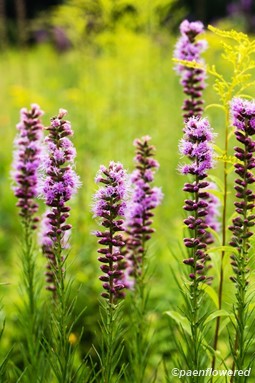
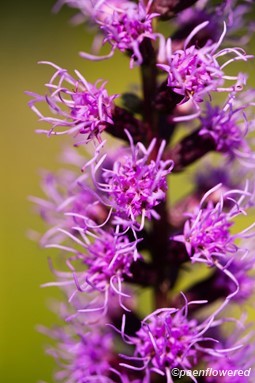

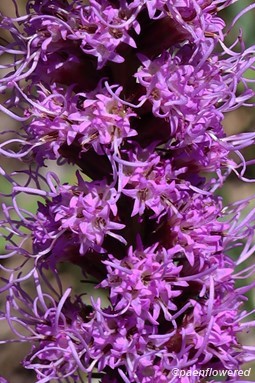
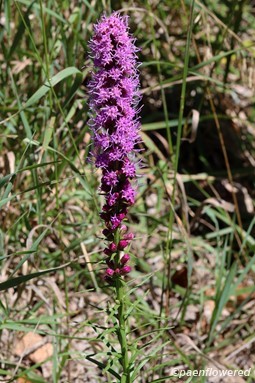
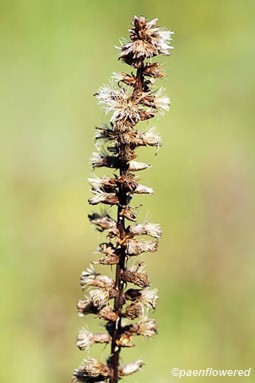

Comments
Have you spotted this plant in your area? We'd love to hear about your experience! Share your comments or questions about the plant below. Comments are moderated before posting.